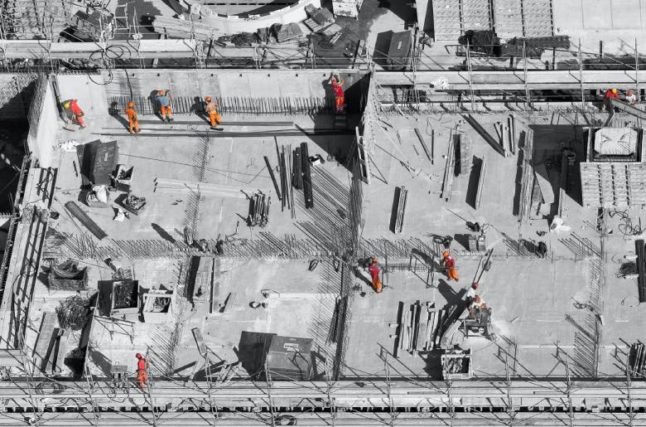The number of new builds sold in Norway during the first quarter of the year is at its lowest level for over 20 years. March was the slowest month for the sale of new builds in Norway since records began in 1999, business news publication E24 reports.
Housebuilding during the first three months of this year are down 50 percent compared to 2022.
Lars Jakob Hiim, managing director of the Housebuilders Association, said that interest rate increases, construction costs and economic uncertainty were behind a decline in new housing developments
A housebuilding crisis just around the corner?
As the aforementioned developments have persisted over the last three months, some industry analysts have started talking about a potential crisis on the horizon.
Henning Lauridsen, the head of the Real Estate Norway (Eiendom Norway) organisation, told The Local that such a crisis is not upon us – yet.
“I would say that there’s a crisis coming… The population in Norway is growing at the fastest rate since 2012, at the same time as the number of new housing construction projects is down, and the number of sales is also down…
“We’re not there yet, but in one year, we will probably be there… We expect a big mismatch between the demand levels and the supply of new homes constructed from 2024-2025,” Lauridsen said.
Higher interest rates to curb housebuilding
According to the Norwegian Association of Estate Agents, increased interest rates could also put Norway at the tip of a house-building iceberg.
“The sale of new homes is now at financial crisis levels, and the pace of starts is plummeting. We have previously warned that the combination of high imported construction costs and too sharp a rise in interest rates could trigger a housing recession, with spillovers to the economy as a whole. Now we are there,” Carl O. Geving of the association told the Norwegian newswire NTB.
Can the situation improve?
Both Hiim and Lauridsen believe authorities have a role to play in solving the issue at hand.
The Boligproduktorenes Forening director thinks Norwegian municipalities need to ensure faster and more predictable case processing concerning zoning plans and permits.
Lauridsen agrees that the authorities’ contribution could be the deciding factor – especially in the context of addressing the aftereffects of the disruption of global supply chains triggered by the Covid-19 pandemic, which also resulted in the price of some materials soaring in Norway.
“First of all, authorities need to help bring the cost of construction materials down, as the material prices are very high. I’m talking about the price of steel, concrete, wood…
“Secondly, the authorities can also help reduce the time it takes for zoning plans and building permits. It takes a very long time to have that in place in, for example, Oslo, and it’s more complicated than it needs to be.
“As we see the prices going up, a contribution from the authorities would be very important,” Lauridsen told The Local in a call.



 Please whitelist us to continue reading.
Please whitelist us to continue reading.
Member comments